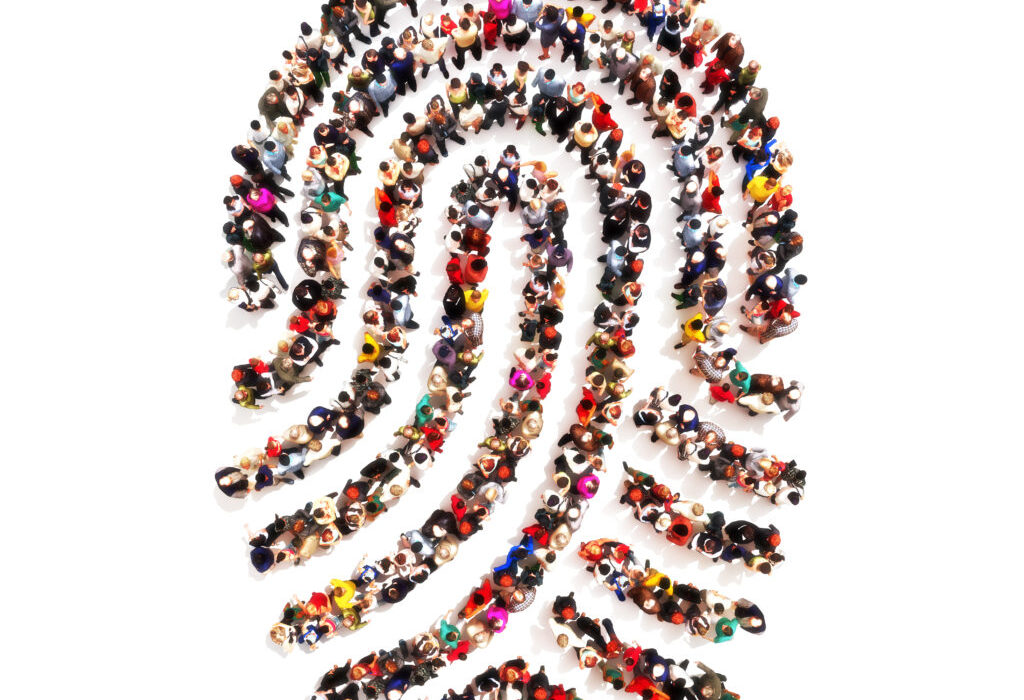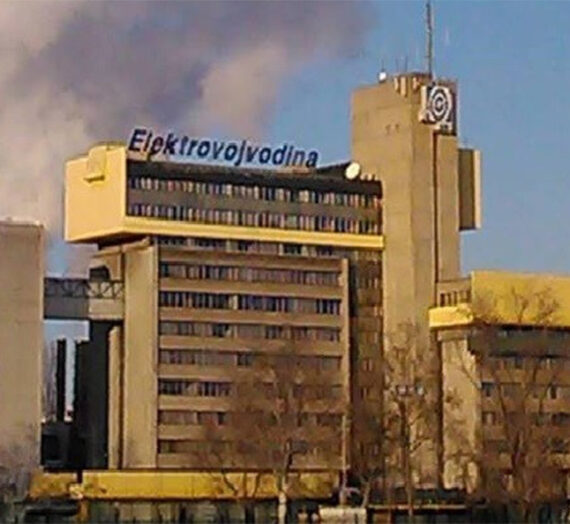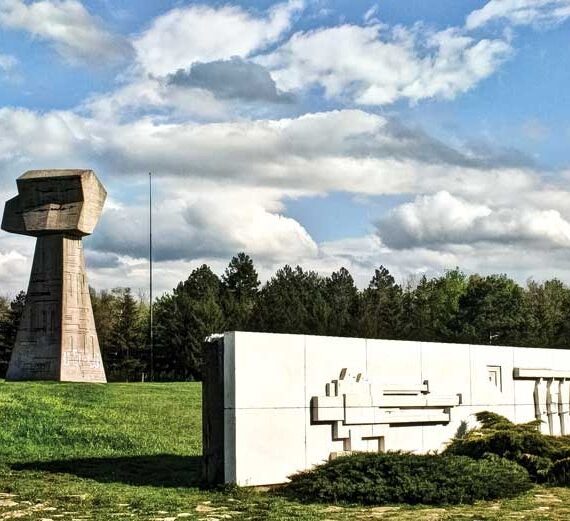AUTHOR: Kristijan Obšust
Abstract:
The paper points out the basic constellations related to the issue of collective identities of members of the Slovak national minority in the Republic of Serbia, ie certain facts that were crucial for defining and constructing the national and religious identity of Slovaks in Serbia.
Key words: Collective identities, Slovaks in Serbia, Slovaks identities, Lower Land Slovaks, Ethnic Minorities
The collective identity, including the national identity of the Slovaks in Serbia, is not a clearly defined and monolithic category, but a complex phenomenon which, despite some basic segments that relate to a clearly defined ethnic and linguistic substrate, is not actually completely permanent, but has over time passed through active processes of partial recomposition. That is, the group identities of the Lower Land Slovaks, observed at the general level, are relatively dynamic categories that originate and originated from the funds of social and political constellations in specific chronological and spatial frameworks. In the light of the foregoing, in the context of the analysis of themes related to the group identities of the Lower Land Slovaks, as well as the Slovaks living in Serbia in particular, one must bear in mind the basic fact related to the diversity of the existing levels of identification of members of the Slovak national minority both in the past and in the modern, current context. These variations in the context of primary identification (local, regional, national and confessional) were also established by anthropological research carried out in several villages and settlements inhabited by members of the Slovak national minority. During field research conducted with over one hundred respondents of different age, sex and level of education, by the unstructured interview method and observation method with participation in Kovačica, Bački Petrovac, Kisač, Gložan, Kulpin, Pivnice, Aradac, Padina and Novi Sad in the period between 2011 and 2014, a complex set of different forms of identification of respondents ranging from local, regional to confessional and national were identified (see Obšust 2012, 2015; also Obšust and Kuzmanović 2019).
That is, although viewed from the outside, the Slovaks community in Serbia is quite clearly defined primarily by the linguistic component used to decisively manifest the national one, i.e. although the Slovak community is defined and separated from others by specific elements of the so-called traditional (folk) culture, and, to a considerable extent, by the confessional identity and certainly the particular linguistic specific, the collective identity of the Slovaks in Serbia is not singular and consists of a whole series of internal variations and depends on the broad fund of social and political factors, but also on the particular temporal and spatial context (Obšust 2015, 6). Thus, the group identities and primarily the national identity of the Slovaks in Serbia, as the most pronounced and most visible form of identity that, viewed from the outside, acts in a compact and clearly defined manner, but actually contains a whole series of elements interwoven primarily with local and regional, but also with confessional forms of identification. By examining the group identities of the Slovaks in Serbia through field research, media content and the study of certain thematic groups on social networks, the statement S. Hall on identity fluidity is confirmed. In other words, it can be noted that the different collective identities that exist among the members of the Slovak national community in Serbia, after all like all group identities, are variable categories with interconnected internal layers, no matter how consistently and concisely they behave externally.
Collective identities, as non-existent dynamic categories, are not singular but are constantly exposed to the processes of multiplication and merging (see Hall 2001) and arise through various antagonistic discourses and practices that often intertwine and overlap (see Eriksen 2004, also Smith 2010). As such, they are often fluid, that is, “conjunctural” (see Clifford 1988, 10–11), which is why they must undergo continuous processes of renewal and determination. Therefore, identities should always be considered as a question of identification, and identification always contains a dialog base (see Bauman 1999). It is precisely through the examination of different identifications of members of the Slovak national minority that an internal level of overlapping and diversity can be determined, which certainly does not exclude the currently dominantly accentuated national and confessional identity. In other words, regardless of the internal fluidity of the collective identities of the Slovaks in Serbia, their ethnic, linguistic and certainly confessional component is clear and unambiguous, but even thus organized, it certainly depends on the individual.
From the period of the creation of the first Slovak enclaves on the territory of Lower Land, the form of identification has changed and varied depending on the particular local context. In this sense, it was very often formed relative to other, surrounding ethnicities. So, there always had to be a concept of the Other no matter how emphasized it was. In the context of collectivity, the national identity has certainly been present already from the establishment of the enclaves in the Lower Land area, although apart from the confessional one, the local identifying premise was the most prominent during the nineteenth century (see Divičanová 1996). Nevertheless, it was secondary to the primary forms of local and confessional identification. Over time, from the end of the nineteenth century, the national concept of identification gradually intensified, that is, on the territory of Lower Land, it became dominant at the beginning of the twentieth century, which is reflected in, among other things, the launching and content of Dolnozemský Slovák magazine.
After 1918 and the formation of the Kingdom of Serbs, Croats and Slovenes, it was rather pronounced and manifested through a series of reflections. The establishment of institutions such as the Grammar school and Matica slovenská, or the launching of the all-national manifestation of Slovak Folk Festival, clearly represents its external steadiness in this period. In this sense, the establishment of Slovak cultural and educational institutions and national festivals, such as the Slovak Folk Festival, on the one hand represented the result of several decades of consolidation of the Slovak national identity among Slovaks who inhabited these areas, while on the other hand, these institutions and manifestations significantly influenced the further strengthening of the national form of identification among the Slovaks in Serbia and Yugoslavia. In this sense, Matica slovenská, Jan Kolar Grammar School, Slovak Folk Festival, as well as Slovak Evangelical Church a. v. conceived with a national prognostication in these areas, which originated from the previously pronounced confessional identity, can essentially be perceived as the starting point, but also as catalysts, i.e. as institutional pillars of the national identity of the Slovak national minority in Serbia. Based on previous research on the issue of group identities of Lower Land Slovaks and all of the foregoing, it can be concluded that the form of some common Lower Land Slovak national identity began to be constructed already in the first decades after the immigration of the Slovaks into Lower Land. However, it was primarily constructed by an extremely small group of more educated layers of the population and as such had a distinctly limited framework. In addition, for most of the Slovakian rural Lower Land population, which practically entirely dealt with agriculture and livestock, this form of identification did not exist at all or was completely marginal relative to the local and confessional forms of identification, as already indicated. However, in spite of this fact, numerous researchers who dealt with various aspects of the history and culture of the Lower Land Slovaks stressed that the Slovakian communities in the region of Lower Land must be analyzed as a whole in order to take into account the internal specificities of particular communities (Slovak enclaves) in particular locations. Certainly, from the beginning, the fact that the Lower Land area was actually comprised of a number of isolated locations or groups of locations, each of which had its own specificities, but which were distinguished by a series of common elements, was respected. One of the most important authors who studied the history and cultural history of the Slovak communities on the territory of Lower Land, historian Jan Siracky, pointed to this fact. He stresses that especially in the period prior to 1918, Lower Land has to be regarded as a whole, since it is only in this way possible to study the common as well as specific individual elements of the Slovak communities living in different locations in southern Hungary (see Siracky 1980). The area of Lower Land, as a specific form of a unique cultural area, certainly with the specifics of different spaces and micro-locations within it, was pointed to by Slovak ethnologist Jan Botik in the context of his ethnological studies (see Botik 2011). However, regardless of the existence of common elements that connect many Slovak enclaves, which were formed during the colonization process from the second half of the eighteenth and during the nineteenth century on the territory of Lower Land, it is very difficult to regard the Slovak community as monolithic in this area, even in the period when it was within the boundaries of a political entity, that is, until 1918. After this period, or the disintegration of the Austro-Hungarian Empire, the Slovak population, both in the territory today occupied by Slovakia as well as in the different regions of Lower Land, found itself in different states and in accordance with the new political, social and cultural constellations, took its own development paths. Therefore, it is not possible to speak of some kind of clearly defined Slovak Lower Land collectivity after 1918, while in the period preceding this year it is visible but contains a whole range of internal varieties. However, on the other hand, Lower Land, in the territorial sense, as a separate entity compared to the so-called Upper Land or today’s area of Slovakia, has been defined and perceived from the beginning as a special unit, or as a single spatial whole with a series of internal subcategories interconnected by various common segments (Obšust 2015, 11). When it comes to contemporary forms of identification of members of the Slovak national minority, it can be noted that the national form of identification is today most pronounced. In other words, it represents a common reference that manifests collectivity, more precisely a determinant that defines the Slovak national community in Serbia relative to Others. In this sense, the reflections of the national identity of the Slovak people in Serbia are quite noticeable at the general level. During anthropological research at different locations, the level of identification perceived was quite different, i.e. a whole series of variations among the subjects was identified. However, the general impression is that the ethnicity of most Slovaks in Serbia, especially those living in locations where the Slovaks represent a relative or absolute majority, is an extremely important, and usually the primary level of identification (see Obšust 2015). This thesis is confirmed by the views of the majority of respondents of Slovak nationality who live in different villages and with whom conversations have been conducted over the past several years. The only exception in this context is Stara Pazova and, to a certain extent, perhaps Novi Sad, which is an urban environment with a specific Slovak community, formed by the migration of Slovaks from different locations.
Without the tendency to delve deeper into this analysis of contemporary forms of identification of members of the Slovak national minority, it should be emphasized that the maintenance of the national identity of the Slovaks in Serbia is significantly influenced by the extremely rich social and cultural life of this national minority, which is reflected in a whole series of different practices, with Slovak Folk Festival being certainly the most important in addition to a series of other festivals, meetings of writers and theater productions. Also, the rather steady nature of the Slovak communities in most of the locations where the members of this national minority live is based on a whole series of other reflections, with particularly visible cultural and educational contacts between the Slovaks in Serbia and the Slovaks in Slovakia standing out, especially strengthened in the past two decades. Also, the compactness of communities in some predominantly Slovak villages is conditioned by a still relatively high percentage of endogamy, which, for example, in Stara Pazova or in most other ethnically mixed areas, is not expressed at all, although it was a very noticeable tendency among the Slovak inhabitants of these settlements until the 1960s (Obšust 2015, 17–18). That is, while in some villages today a rather high degree of endogamy is observed, in other predominantly mixed areas in which the Slovaks are not an absolute or relative majority, the exogamy of the Slovakian part of the population is quite emphasized. Observed from today’s prism of observation, it is clearly this very high level of endogamy in the various communities of the Slovaks in the region of Lower Land, which was exceptionally stressed until the first decades of the twentieth century, that contributed to the survival of most of these communities to the present day to the greatest extent.
BIBLIOGRAPHY
Bauman, Gerd. 1999. The Multicultural Riddle: Rethinking National, Ethnic and Religious Identities. London: Routledge.
Botik, Jan. 2011. Dolnozemski Slovaci: tri storočia vystahovaleckych osudov sposobu života a identity Slovakov v Maďarsku, Rumunsku, Srbsku a Bulharska. Nadlak: Vydavatelstvo Ivan Krasko.
Clifford, James. 1988. The Predicament of Culture: Twentieth-Century Ethnography, Literature, and art. Cambridge. Mass: Harvard University Press.
Divičanova, Anna. 1996. „Vyvojove premeny tradičnej kultury Slovakov v Maďarsku“. In Atlas ļudovej kultury Slovakov v Maďarsku, 7–36. Bekešska Čaba: Vyskumny ustav Slovakov v Maďarsku.
Eriksen, Tomas H. 2004. Etnicitet i nacionalizam. Beograd: Biblioteka XX vek.
Hall, Stuart. 2001. „Kome treba identitet“. Reč 64: 215–234.
Obšust, Kristijan. 2012. Refleksije slovenstva i pojedini aspekti identifikacijskih odnosa među stanovnicima naselja Stara Pazova: Sondažna istraživanja. Beograd: Centar za alternativno društveno i kulturno delovanje.
Obšust, Kristijan. 2015. Prilog proučavanju kolektivnih identiteta Slovaka u Srbiji: grupni identiteti i savremeni oblici identifikacije stanovnika naselja Kovačica. Novi Sad: Zavod za kulturu vojvođanskih Slovaka.
Obšust Kristijan a Kuzmanović Nebojša. 2019. Collective identity of The Slovaks in Serbia: The Importance of Slovak Cultural and Educational Institutions and Confessional Identity for the Construction and Reflection of the National Identity of the Slovaks in Serbia. Novi Sad: Archives of Vojvodina.
Siracky, Jan. 1975. „Dolna zem a Slovaci. Historicka načrt“. Slovensky narodopis 23: 173–182.
Siracky, Jan. 1980. Slovaci vo svete 1. Martin: Matica slovenska.
Smit, Antoni D. 2010. Nacionalni identitet. Beograd: Biblioteka XX vek.



